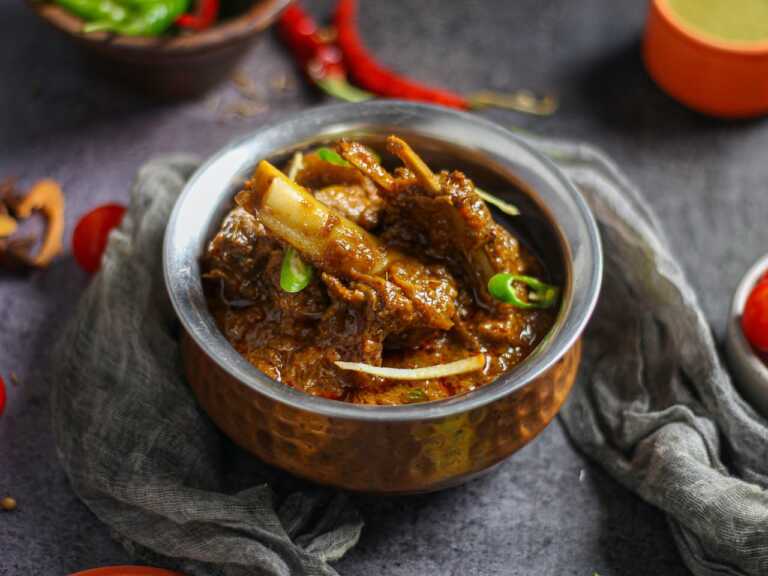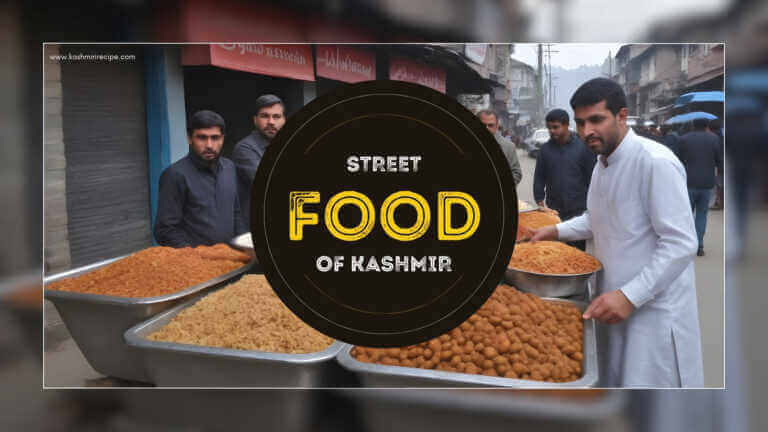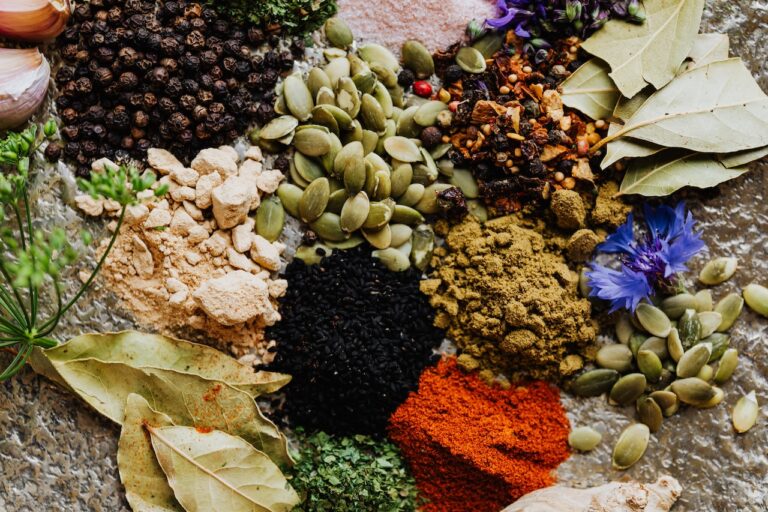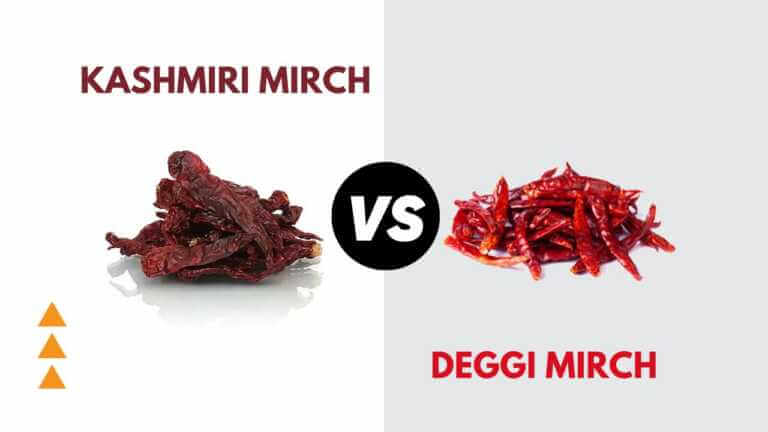List of Masala and Spices for Kashmiri Wazwan
Contents
- Kashmiri Wazwan Masala List
- 1. Saffron (Kesar)
- 2. Kashmiri Red Chilies (Dagi Mirch)
- 3. Fennel Seeds (Saunf)
- 4. Dry Ginger Powder (Sonth)
- 5. Cloves (Laung)
- 6. Green Cardamom (Choti Elaichi)
- 7. Black Cardamom (Badi Elaichi)
- 8. Cinnamon (Dalchini)
- 9. Asafoetida (Hing)
- 10. Cumin Seeds (Jeera)
- 11. Coriander Powder (Dhania Powder)
- 12. Turmeric Powder (Haldi)
- 13. Bay Leaves (Tej Patta)
- 14. Black Cumin (Shahi Jeera)
- 15. Mustard Oil (Sarson ka Tel)
- 16. Ghee (Clarified Butter)
- 17. Curd (Khatti Dahi)
- 18. Ratan Jot (Alkanet Root)
- 19. Mace (Javitri)
- 20. Nutmeg (Jaiphal)
- 21. Black Peppercorns (Kali Mirch)
- 22. Clove Powder (Laung Powder)
- Spice Blends and Mixes
- Tips for Using Kashmiri Masalas and Spices
- People also ask
- Conclusion
Kashmiri cuisine is renowned for its rich and aromatic flavors, and one of the most celebrated culinary traditions from this region is the Kashmiri Wazwan. Wazwan is a multi-course meal that features a wide variety of dishes, each prepared with a unique blend of spices and masalas.
Kashmiri Wazwan is not just a meal; it’s a cultural and culinary experience that has been passed down through generations in the Kashmir Valley. It is often associated with special occasions like weddings and festivals, where the elaborate spread of dishes showcases the host’s hospitality and the region’s culinary expertise.
The term “Wazwan” is derived from two Persian words: “waz” meaning “cook” and “wan” meaning “shop.” Traditionally, Wazwan was prepared and served by the ‘Wazas,’ who were skilled chefs with an intricate knowledge of the spices and masalas that define Kashmiri cuisine. These chefs took immense pride in their craft, and their skills were a closely guarded secret, passed down from one generation to the next.
A typical Wazwan meal can consist of anywhere from 16 to 36 different dishes, each with its own distinct flavor profile and preparation method. While the dishes vary, they share common elements, such as the use of aromatic spices and masalas, slow cooking techniques, and the emphasis on retaining the natural flavors of the ingredients.
Kashmiri Wazwan Masala List
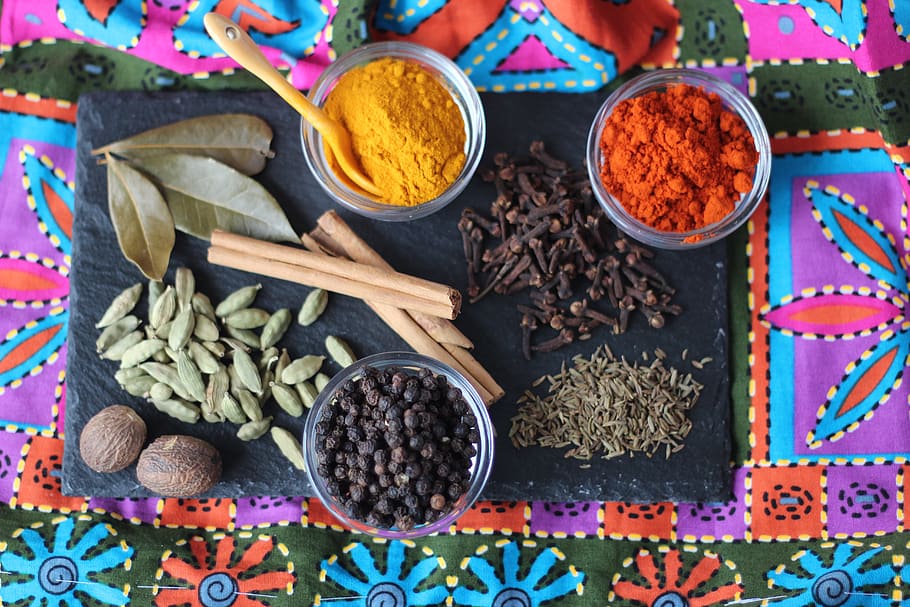
The heart and soul of Kashmiri Wazwan are the spices and masalas used in its preparation. These ingredients are carefully selected and blended to create the intricate and harmonious flavors that are characteristic of the cuisine. Here is a comprehensive Kashmiri Wazwan masala list and essential spices:
1. Saffron (Kesar)
Saffron is often referred to as “red gold” due to its high value and vibrant color. Kashmiri saffron is renowned for its quality and flavor. It is used to add a subtle floral and earthy aroma, as well as a distinctive golden hue, to many Wazwan dishes, particularly rice preparations like “Zafrani Pulao.”
2. Kashmiri Red Chilies (Dagi Mirch)
Kashmiri cuisine is known for its mild heat and deep red color, which is achieved using Kashmiri red chilies. These chilies are less spicy compared to other varieties but impart a rich color and a hint of heat to dishes like “Rogan Josh” and “Gushtaba.”
3. Fennel Seeds (Saunf)
Fennel seeds are a common ingredient in Kashmiri spice blends. They have a sweet and licorice-like flavor that adds a subtle sweetness to dishes like “Yakhni” and “Dum Aloo.”
4. Dry Ginger Powder (Sonth)
Dry ginger powder is used to give a warming and slightly spicy kick to Wazwan dishes. It is a key ingredient in the spice blend called “Garam Masala,” which is used in various preparations.
5. Cloves (Laung)
Cloves are used sparingly in Kashmiri cuisine due to their strong flavor. They contribute to the complex aroma of dishes like “Gushtaba” and “Methi Chaman.”
6. Green Cardamom (Choti Elaichi)
Green cardamom pods are often used whole or ground to add a sweet and floral note to many Kashmiri dishes, including “Rista” and “Kofta.”
7. Black Cardamom (Badi Elaichi)
Black cardamom has a smoky and earthy flavor, and it’s commonly used in meat-based Wazwan dishes to impart a deep, robust taste.
8. Cinnamon (Dalchini)
Cinnamon sticks or ground cinnamon are used in spice blends like “Garam Masala” and are added to meat curries and rice dishes for a warm and sweet undertone.
9. Asafoetida (Hing)
Asafoetida is a pungent spice that is used sparingly in Kashmiri cuisine. It is added to hot oil to release its aroma before incorporating it into dishes like “Hak Saag” and “Nadru Monje.”
10. Cumin Seeds (Jeera)
Cumin seeds are often tempered in hot oil to release their nutty and earthy flavor. They are a fundamental ingredient in many rice dishes and gravies.
11. Coriander Powder (Dhania Powder)
Coriander powder provides a subtle citrusy and earthy flavor to Wazwan dishes. It’s used in spice blends and marinades for meats and vegetables.
12. Turmeric Powder (Haldi)
Turmeric not only adds a vibrant yellow color to dishes but also has medicinal properties. It’s used to marinate meats and in rice dishes like “Yakhni Pulao.”
13. Bay Leaves (Tej Patta)
Bay leaves are used to infuse a mild, aromatic flavor into dishes like “Gushtaba” and “Methi Chaman.”
14. Black Cumin (Shahi Jeera)
Black cumin has a sweeter and milder flavor compared to regular cumin. It’s used in rice preparations and meat dishes for a unique aroma.
15. Mustard Oil (Sarson ka Tel)
Mustard oil is the preferred cooking medium in Kashmiri cuisine due to its distinct pungency. It’s used for frying and tempering in various recipes.
16. Ghee (Clarified Butter)
Ghee is used generously in Kashmiri Wazwan, adding richness and depth to dishes. It is especially prominent in rice preparations like “Mutton Biryani.”
17. Curd (Khatti Dahi)
Curd is a common ingredient used to marinate meats and lend a tangy flavor to gravies like “Rogan Josh” and “Aab Gosh.”
18. Ratan Jot (Alkanet Root)
Ratan Jot is used to enhance the red color of certain dishes. It’s usually soaked in water and the resulting infusion is added to the food.
19. Mace (Javitri)
Mace, a spice derived from the nutmeg tree, is used to impart a mild, warm flavor to dishes like “Yakhni” and “Gushtaba.”
20. Nutmeg (Jaiphal)
Nutmeg is used sparingly in spice blends and rice dishes to add a subtle, nutty flavor.
21. Black Peppercorns (Kali Mirch)
Black peppercorns are crushed and added to spice blends and meat dishes for a peppery kick.
22. Clove Powder (Laung Powder)
Ground clove powder is used in spice blends and marinades to enhance the flavor of meats.
Spice Blends and Mixes
In addition to individual spices, Kashmiri Wazwan also relies on several spice blends and masalas to create the unique flavor profiles of its dishes. Here are some of the most important spice blends:
1. Garam Masala
Garam Masala is a versatile spice blend used in many Kashmiri dishes. It typically consists of cinnamon, cardamom, cloves, and black peppercorns. It adds warmth and depth to gravies, meats, and rice dishes.
2. Wazwan Masala
Wazwan Masala is a special spice blend created by the Wazas, the traditional chefs of Kashmir. This blend is a closely guarded secret, with each Waza having their own recipe. It is used in signature dishes like “Rogan Josh” and “Rista.”
3. Hing Sonth
Hing Sonth is a blend of asafoetida and dry ginger powder. It’s commonly used for tempering and adds a unique flavor to vegetarian dishes.
4. Zira-iyaafat
Zira-iyaafat is a spice blend made from cumin seeds and fennel seeds. It’s used in various vegetarian and non-vegetarian preparations to enhance the aroma.
Tips for Using Kashmiri Masalas and Spices
The use of a variety of masalas (spices) and condiments results in the rich, fragrant flavours that are characteristic of Kashmiri cuisine. Here are a few tips for using important spices and masalas for Kashmiri Wazwan:
1. Buy Fresh Spices:
Start with fresh, high-quality spices. The flavor and aroma of spices degrade over time, so it’s essential to use fresh ones for the best results.
2. Toasting Spices:
Many Kashmiri recipes begin by toasting whole spices like cumin seeds, fennel seeds, and cardamom pods. Dry roast them in a pan over low heat until they release their aroma. Be careful not to burn them, as this can result in a bitter taste.
3. Homemade Spice Blends:
Kashmiri cuisine often relies on homemade spice blends. The most famous one is the Kashmiri Garam Masala, which includes ingredients like cinnamon, cardamom, cloves, and bay leaves. You can make your own blend or buy pre-made mixes from stores.
4. Kashmiri Chili Powder:
Kashmiri cuisine is known for its use of Kashmiri red chili powder. It’s mild in heat but imparts a beautiful red color to dishes. You can use it to marinate meat or add it to curries for a mild, smoky flavor.
5. Saffron (Kesar):
Saffron is a prized spice in Kashmiri cuisine. To use saffron effectively, soak a few saffron threads in warm milk for 15-20 minutes before adding them to your recipe. This allows the saffron’s flavor and color to infuse into the milk.
6. Use Curd and Cream:
Kashmiri cuisine often uses curd and cream to balance the heat of the spices. When adding curd, make sure to whisk it well to prevent curdling.
7. Slow Cooking:
Many Kashmiri dishes benefit from slow cooking. The slow simmer allows the spices to meld together and develop a deeper flavor profile. Patience is key.
8. Balancing Sweet and Spicy:
Kashmiri cuisine often strikes a balance between sweet and spicy flavors. Ingredients like dried fruits and sugar are used to add sweetness to many dishes. Be mindful of this balance when experimenting with recipes.
9. Learn Regional Variations:
Kashmiri cuisine varies from region to region within the Kashmir Valley, so consider exploring different regional recipes to appreciate the diversity of flavors and spices used.
10. Experiment and Taste as You Go:
Don’t be afraid to experiment with spices and masalas in your Kashmiri dishes. Taste as you go and adjust the spices, salt, and sweetness to your liking.
11. Ghee or Mustard Oil:
Ghee (clarified butter) and mustard oil are commonly used cooking mediums in Kashmiri cuisine. They impart their unique flavors to the dishes, so consider using them when appropriate.
12. Garnish with Dry Fruits:
Many Kashmiri dishes are garnished with roasted dry fruits like almonds, cashews, and pistachios. These add both flavor and texture to the final dish.
People also ask
-
Why is Kashmiri Wazwan famous?
Kashmiri Wazwan is famous for its intricate and harmonious flavors. It showcases the culinary expertise of the region, with each dish featuring a unique blend of spices and masalas.
-
What are some signature dishes of Kashmiri Wazwan?
Some signature dishes of Kashmiri Wazwan include Rogan Josh, Rista, Yakhni, Gushtaba, Dum Aloo, and Zafrani Pulao, among others.
-
Why is saffron important in Kashmiri cuisine?
Saffron is highly regarded in Kashmiri cuisine for its distinctive flavor, aroma, and golden hue. It is used in various dishes, particularly rice preparations, to enhance both flavor and color.
-
Can I find Kashmiri spices and masalas outside of Kashmir?
Yes, you can often find Kashmiri spices and masalas in specialty Indian grocery stores or online spice retailers. Look for trusted brands to ensure quality.
-
Can I make Kashmiri Wazwan dishes vegetarian?
Yes, many Kashmiri Wazwan dishes can be adapted to vegetarian versions. You can substitute meats with vegetables or paneer (Indian cottage cheese) in recipes like Dum Aloo and Methi Chaman.
Conclusion
Kashmiri Wazwan is a culinary treasure trove that showcases the artistry of Kashmiri chefs and the richness of the region’s spices and masalas. From the vibrant hues of saffron to the earthy warmth of black cardamom, each ingredient plays a vital role in creating the symphony of flavors that defines this cuisine.
As you embark on your journey to explore the world of Kashmiri Wazwan, keep this comprehensive list of masalas and spices close at hand. Whether you’re preparing a traditional feast or experimenting with Kashmiri flavors in your kitchen, these essential ingredients will help you recreate the magic of this time-honored culinary tradition. So, gather your spices, don your apron, and get ready to savor the exquisite flavors of Kashmiri Wazwan like never before.
Important Search Terms:
Kashmiri wazwan masala list, Wazwan masala list in India, Wazwan masala online, Kashmiri wazwan masala, Famous Kashmiri spices,




